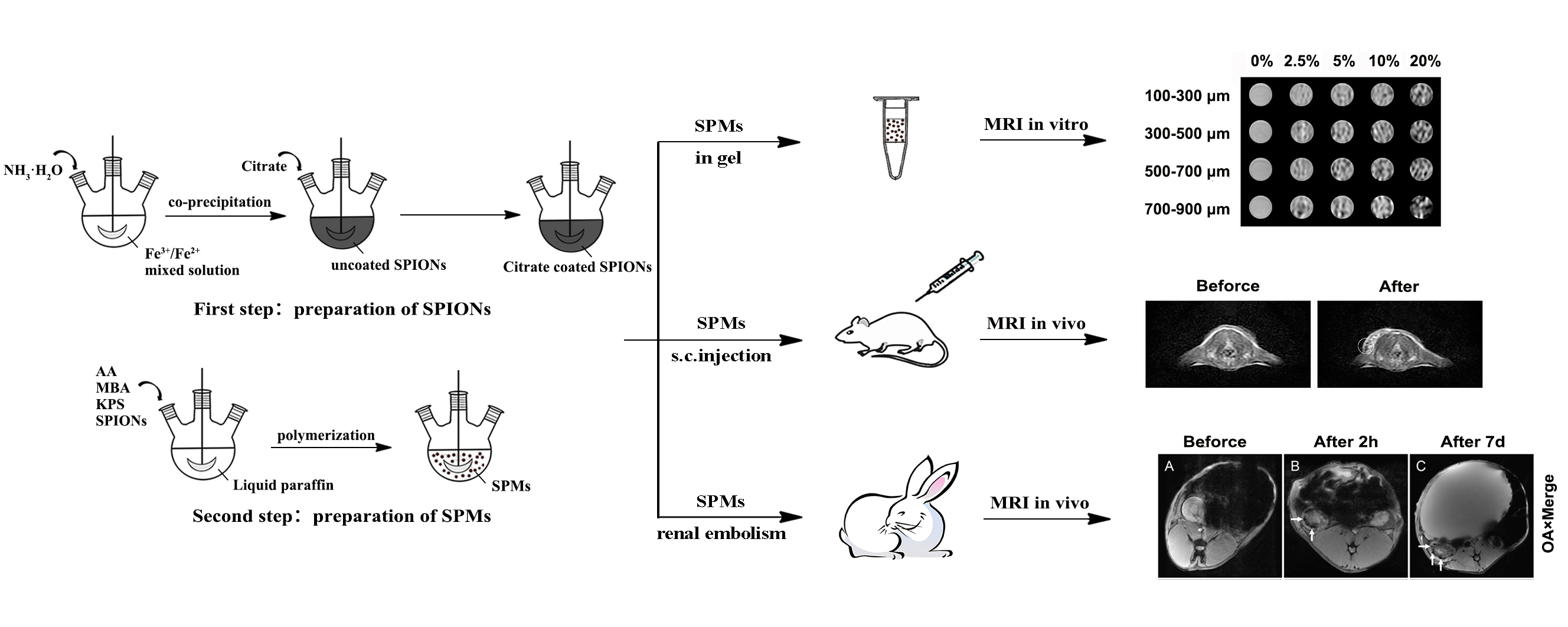Poly (acrylic acid) microspheres loaded with superparamagnetic iron oxide nanoparticles for transcatheter arterial embolization and MRI detectability: in vitro and in vivo evaluation
Zi-Yuan Li, Xiao-Ya Qin, Li-Ying Guo, Huan Wang, Xiao-Xin Liu, Zhuo-Zhao Zheng,Hai-Tao Guan,Li Song, Ying-Hua Zou, Tian-Yuan Fan*.International Journal of Pharmaceutics. 2017, 527: 31-41.
Abstract
To develop embolic microspheres with MRI detectability, superparamagnetic iron oxide nanoparticles (SPIONs) were synthesized and mixed with monomer of acrylic acid to prepare SPIONs-loaded polymerized microspheres (SPMs) by inverse suspension polymerization method. The SPMs were evaluated for the ability of embolization by investigating the morphology, particle size, elasticity and renal arterial embolization to rabbits. Meanwhile, the loading of SPIONs was verified by optical microscope, transmission electron microscope, Fourier transform infrared spectrum, vibrating sample magnetometer, X-ray diffractionand X-ray photoelectron spectroscopy, and the content of SPIONs in SPMs was measured quantitatively. Furthermore, the MRI detectability of SPMs was testified in gel phantom, mice and rabbits respectively by a clinical 3.0 Tesla MRI scanner. The results revealed the SPMs were potential MRI detectable embolic microspheres for improving the effectiveness and safety of embolotherapy in the future.
Keywords:Hydrophilic polymer microspheres; Superparamagnetic iron oxide nanoparticles; Magnetic resonance imaging; Embolization

URL of PubMed:https://www.ncbi.nlm.nih.gov/pubmed/28487188